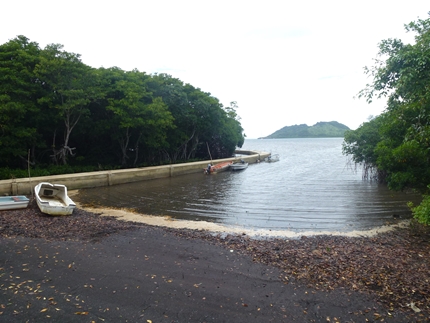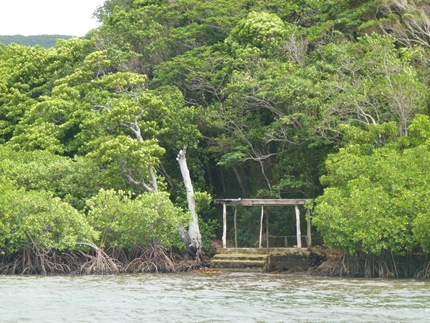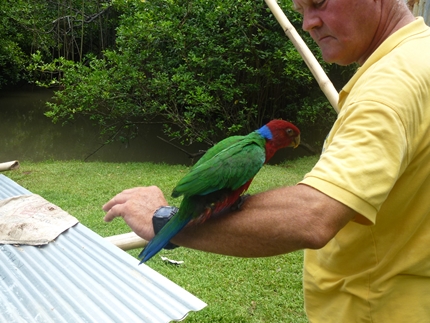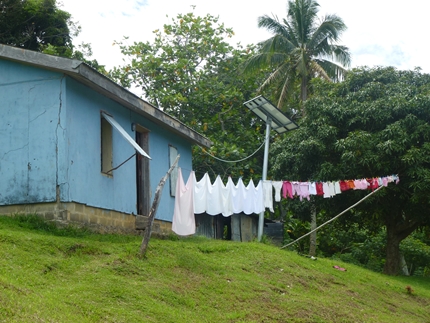Monday 11th November 2013 - Matasawalvu and Naigoro Bay

|
19:00.06S 178:28.20E Monday 11th November 2013 – Matasawalvu and
The chart of the passage between Ono and Kadavu looks
particularly scary – rocks are strewn liberally around and patches of reef
partially block the entrance to bays.
However, armed with tracks down-loaded from the OCC website, we were able
to negotiate our way through the hazards without any heart stopping moments and
eventually drop anchor in Naigoro Bay in the early afternoon of Friday 8th. Carol had been hoping to do some diving
from here – the Again, we had been advised to go to the main jetty in the
Lots of gloopy mud and it isn’t even half tide.
The Bus Stop – accessible at all states of tide but 5 or 10 minutes’ walk from the village On coming ashore we asked to be directed to the chief’s
house but instead were taken to the mayor’s house. Sireli told us that he invariably
welcomes visiting yachties. He was
very grateful to receive our gift of kava roots even though he farms kava
himself. He very kindly took us on
a tour of the village. Carol asked
where the best place was to see the musk parrots for which the
Who’s a pretty boy, then? We were also taken to see the piggery built on stilts in one of the mangrove swamps. Free range pigs these are not, apart from the sow. However, they do have a certain amount of freedom of movement, are out in the fresh air and are protected from the heat of the sun and the rain by the tree canopy.
Not too unhappy pigs Every house in the village has a solar panel connected to a battery and an inverter - all provided by some sort of central funding. So, there is a limited amount of 240V AC power available to all. That does seem a much better idea than the previously seen initiative, elsewhere, of installing a diesel generator. First it needs diesel - not readily obtainable in the small islands – and, second, it needs servicing. We heard from one cruising friend a few months ago about a conversation he had with villagers whose diesel generator had, apparently unaccountably, stopped working. When he asked them when it was that they had last topped up or changed the oil he was met with baffled looks. Whenever you walk around the villages here you come across fully laden washing lines. Indeed, one of the supplies that we were advised to bring with us as gifts, was long bars of laundry soap. Of course, there are no washing machines – everything is done by hand. Carol spotted one mathematically inclined Mum who had almost achieved an exponential curve with the bottom of the clothes on her line – possibly indicating that a woman’s work is never done!
High tech washing line and solar panel On our third day in Jon’s back wasn’t getting any better so, on Monday 11th November, we weighed anchor, reversed our track through the rocks and reefs under a gloomy grey sky and headed back to Vuda. Apart from one rather unpleasant squall in the middle of the night, it was a decent down wind sail, with one reef in the mainsail and the Yankee poled out, in a good 20 knots of breeze. Early on the 12th, we were tied up once more in the marina and on a mission to find a doctor to have a look at Jon’s back. |




